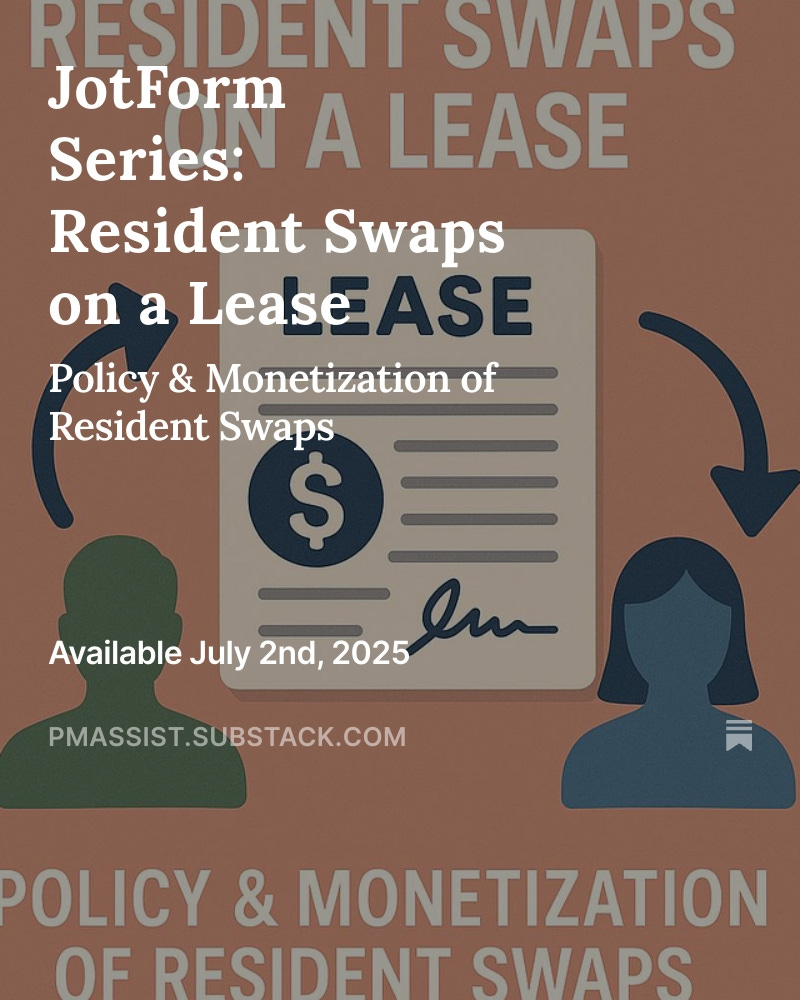Roommate swaps are a fact of life in property management—especially in college towns and high-cost metro areas. Whether you like it or not, residents will ask to switch out a leaseholder mid-lease, and ignoring these requests isn’t an option if you want to avoid conflict (and possibly Fair Housing complaints).
But you can systematize the process, set clear policies, and—importantly—monetize it.
Create a Clear Resident Swap Policy
Before you collect a dime, you need a written policy that protects your company and your clients. Here are the essentials:
HOA Restrictions: If you're in a market like Florida or Arizona, account for HOAs that may restrict swaps altogether.
Everyone Signs: Even the departing tenant must sign the amendment to avoid issues with security deposits and lease liability.
One at a Time: Only allow one swap at a time. Trying to process multiple at once is a paperwork headache waiting to happen.
No Deposit Refunds: Make it clear that the departing resident isn’t entitled to “their portion” of the security deposit. It stays with the lease.
Request ≠ Removal: A submitted request doesn’t remove anyone. No swap is official until screening is complete and a signed amendment is in place.
Screen Every Time: Always run a new application on the revised tenant group. Credit and criminal history matter, even if one person is staying.
Transparent Fees: Spell out the application and admin fees clearly in the policy to avoid tenant disputes later.
Charge a Fair Administrative Fee
Handling these requests takes time—and time is money. Most markets support an admin fee between $100–$300, depending on your rent levels and workload. This is often referred to as a lease assignment fee, roommate change fee, or leaseholder substitution fee. Pick a rate that reflects your team’s effort and your local market conditions.
Don’t Forget the Landlord’s Cut
Even if the landlord still has a signed lease with the same number of tenants, any change is a risk. That’s why many property managers also charge liquidated damages on behalf of the landlord, often calculated as 10% of the remaining lease value. For example:
Rent: $1,500/month
6 months remaining
Fee: $1,500 × 10% × 6 = $900
This helps offset the risk to the property owner and creates a “triple win”:
✅ Property manager gets paid
✅ Landlord is compensated
✅ Tenant gets their swap when they follow the rules
Want Templates to Streamline It?
If you’d like access to the JotForm request form and LeadSimple process templates we use to automate this workflow, they’re available exclusively to PMAssist Insider subscribers. You’ll also get access to our entire library of policies, automations, and process documentation to help you scale smarter.


